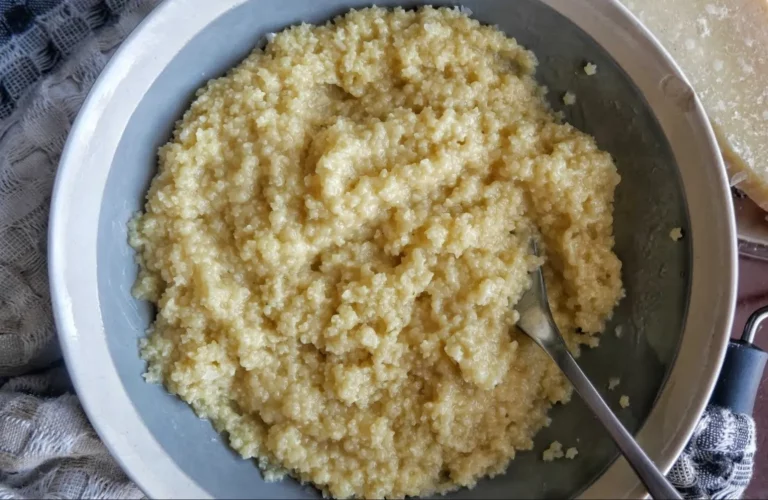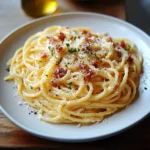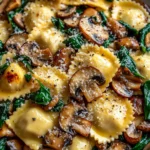Are You Supposed to Drain Pastina?
Are you supposed to drain Pastina? Many people ask this common question when they cook Pastina, the smallest form of pasta and a beloved staple in Italian cuisine.. In this comprehensive guide, we’ll explore this question in depth, delve into the history of Pastina, its cultural significance, and its various uses in Italian and global cuisine. We’ll also provide you with popular Pastina recipes to try at home.
In this section, we’ll delve into the history of Pastina, its cultural significance, and its various uses in Italian and global cuisine. We’ll explore how Pastina has evolved over the years, the traditions associated with it, and why it continues to be a favorite among people of all ages. We’ll also explore Pastina’s role in Italian cuisine, its usage in different regions of Italy, and how cooks around the world have incorporated it into their cuisines. For more pasta recipes, you can check out our Ultimate Guide to Pastina Recipes.
Types of Pastina: From Acini di Pepe to Orzo
There are several types of Pastina, each with its unique shape and size. These variations add not only visual appeal to dishes but also contribute to the texture and overall eating experience. Some of the most common types include Acini di pepe, Stelline, and Orzo. To learn more about pasta shapes, check out this guide by Serious Eats.
- Acini di pepe: This type of Pastina is tiny and round, resembling peppercorns. Cooks often use it in soups and salads, where it adds a delightful texture that enhances every bite. Its name translates to “peppercorns” in Italian, a testament to its shape rather than its flavor.
- Stelline: These are star-shaped Pastina, a favorite among children. Their unique shape makes them a popular choice for broths, especially in chicken soup. The stars add a playful element to the dish, making mealtime more enjoyable for the little ones.
- Orzo: Although larger than most Pastina, Orzo is still considered a type of Pastina. It’s shaped like a large grain of rice and is often used as a substitute for rice in various dishes. Its versatility makes it a popular choice in both Italian and Mediterranean cuisines.
In this section, we’ll delve deeper into these types, discussing their origins, uses, and the dishes where you commonly find them. We’ll also examine how the different shapes of Pastina can influence a dish’s flavor and texture, and why cooks prefer certain types of Pastina for specific recipes. We’ll also discuss the process of making Pastina, from the dough preparation to the shaping and drying process.
How to Cook Pastina: Are you supposed to drain Pastina?
Cooking Pastina is relatively straightforward, but the nuances in the process can significantly affect the final dish’s outcome. It’s typically boiled in water or broth until it’s soft. The cooking time can vary depending on the type of Pastina, but it usually takes between 8 to 12 minutes. For more tips on cooking pasta perfectly, visit this guide by Food Network.
One common question when cooking Pastina is whether or not to drain it. The answer depends on the recipe. For example, in a Pastina soup recipe, the Pastina is cooked directly in the broth, and there’s no need to drain it. The Pastina absorbs the broth, becoming flavorful and delicious.
However, if you’re making a dish where the Pastina needs to be separate, like a pasta salad, you would drain it after cooking. Just be careful when draining as the small size of Pastina can make it a bit tricky. In this section, we’ll provide a step-by-step guide on how to cook Pastina, including tips on achieving the perfect texture and flavor. We’ll also discuss the importance of timing in cooking Pastina, how to adjust the cooking process depending on the type of Pastina, and how to store cooked Pastina. We’ll also explore the science of pasta cooking, discussing why you need to cook Pastina in boiling water, the role salt plays in the cooking process, and how to prevent Pastina from sticking together.
Diving Deeper into Pastina
Popular Pastina Recipes: Do you need to drain Pastina?
There are countless ways to enjoy Pastina. Here are a few popular recipes:
- Pastina Soup: This comforting soup often includes chicken broth, vegetables, and Pastina. It’s a perfect dish for a cold day or when you’re feeling under the weather. In this section, we’ll provide a detailed recipe, including variations and serving suggestions. We’ll also explore the history of Pastina soup, its cultural significance, and why it’s a favorite comfort food in many households.
- For Creamy Pastina, you cook the Pastina in milk until it’s creamy and soft. People often serve it as a side dish or a comforting main dish. We’ll discuss how to achieve the perfect creaminess and what ingredients work best for this recipe. We’ll also look at variations of creamy Pastina, how to customize it to your liking, and how to serve it.
- Pastina with Egg and Cheese: This is a classic Italian comfort food. You cook the Pastina in broth, then mix it with beaten egg and cheese, creating a creamy, savory dish. We’ll explore the origins of this dish, its evolution over time, and the steps to make it at home. We’ll also discuss the role of each ingredient, how they come together to create a harmonious dish, and how to achieve the perfect balance of flavors.
- Pastina with Butter and Milk: This is a simple, comforting dish often served to children. You cook the Pastina, then mix it with butter and a splash of milk. We’ll provide a step-by-step guide on how to make this dish, including tips on serving and storing. We’ll also explore why this dish is a favorite among children, its nutritional value, and how to make it more appealing to picky eaters.
FAQs about Pastina: Draining, Reheating, and More
- Do you need to drain Pastina? As mentioned earlier, the recipe determines this. If you’re making soup, there’s no need to drain. If you’re making a dish where the Pastina needs to be separate, you would drain it. In this section, we’ll explore this question in more detail, discussing the reasons behind it and providing practical tips. We’ll examine the effects of draining or not draining Pastina on the final dish, and how to choose what’s best for your recipe.
- How to reheat Pastina? Reheat it on the stove with a bit of liquid (water, broth, or milk) to prevent drying.. We’ll provide a detailed guide on how to reheat Pastina without losing its texture and flavor. We’ll also cover storing leftover Pastina, its fridge life, and best dishes for using leftovers.
- How to drain Pastina effectively? Due to its small size, draining Pastina can be tricky. It’s best to use a fine-mesh strainer to drain it. We’ll discuss techniques for draining Pastina and other small pastas, with tips to prevent sticking after draining.
The Health and Nutritional Benefits of Pastina
We’ll also explore how Pastina fits into a balanced diet, making healthier dishes, and its use in special diets like gluten-free or vegan.
Understanding Pastina—from its types to its cooking methods—can enhance your culinary skills and broaden your pasta repertoire. This tiny pasta, though small, is versatile and flavorful. It’s a beloved ingredient in Italian cuisine and beyond. We hope this guide has deepened your appreciation for Pastina and inspired you to use it in your cooking. Whether you’re a seasoned cook or a beginner, Pastina offers endless possibilities for creativity and enjoyment in the kitchen. For more delicious recipes, don’t forget to check out our Hot Ham and Swiss Croissants and Oreo Cheesecake Cookies recipes.






